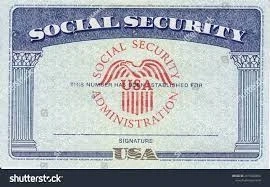The use of the SSN has expanded substantially since its inception in 1936. Created merely to keep track of the earnings history of U.S. workers for Social Security entitlement and benefit computation purposes.
It has become a number assigned at birth and used by many government agencies to identify individuals and by private industry to track an individual\'s financial history.
That trend has begun to shift. As early as December 2004, IRTPA legislation prohibited states from displaying the SSN on driver\'s licenses or motor vehicle registrations.
In 2007, the President\'s Identity Theft Task Force (2007, 3) included among its SSN recommendations that "federal agencies should reduce the unnecessary use of SSNs, the most valuable commodity for an identity thief."
- On November 18, 2008, President George W. Bush issued EO 13478 rescinding the 1943 EO requiring all federal agencies to use the SSN as an identifier.
- Then in December, the FTC (2008) issued a plea to companies, schools, and other private entities to find better ways to authenticate identities than using the SSN.
- State and local entities have begun to delete SSNs on electronic versions of public records.
- Congress has also considered legislation that would require the Centers for Medicare and Medicaid Services to use an alternative to the SSN as the Medicare claim number.
- Even SSA, which created the SSN for its program use, has ceased to print the full SSN on some of its correspondence with beneficiaries (Lockhart 2002).
- The agency now advises individuals to keep their Social Security card in a safe place and not to carry it with them (SSA 2007a).
- Federal survey-takers are also finding that as respondents have become more aware of the risk of identity theft, they are less willing to supply SSNs that are useful in linking the agency\'s survey data with administrative records from other agencies.
- For the Census Bureau\'s Survey of Income and Program Participation, the share of respondents who did not provide their SSN increased from 12 percent in 1996 to 35 percent in 2004.
- Likewise, the share of respondents who did not provide an SSN for the Census Bureau\'s Current Population Survey increased from 10 percent in 1994 to almost 23 percent in 2003 (Bates 2004, 4).
- The National Center for Health Statistics reports a similar problem.
- Still, it is highly unlikely that use of the SSN as a unique identifier will cease entirely.
- In order to share data among government agencies or between commercial firms, a unique identifier to match records is critically important, and the is the one unique tag that follows an individual throughout life.
- People may change their names and addresses throughout their lives, but their SSNs generally will remain the same. Of course, the SSN will also still be used for its original purpose—to track earnings in SSA records. The SSN is here to stay for the foreseeable future.
SSA will continue to assess its policies and procedures to further strengthen the integrity of the enumeration process to prevent SSN fraud and misuse, as well as to protect the important personal information with which it is entrusted. SSA is a member of the Identity Theft Task Force and will continue to work with other members to protect, to the maximum extent possible, the integrity of the SSN.
0



